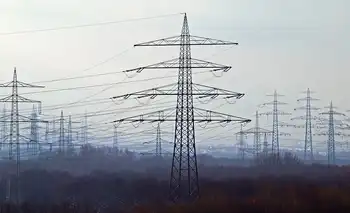Electric costs could soar after lifting of rate caps
MARYLAND - Dramatic actions were taken in response to great public anger.
The Maryland General Assembly voted to fire all five members of the Maryland Public Service Commission recently, which regulates utilities.
And the legislators are requiring Constellation Energy to refund $528 million it collected from rate payers for power plants supposedly made uneconomical by the process to deregulate the electric industry - so-called stranded costs.
For Pennsylvania residents, the issues in Maryland could be harbingers of what might happen here.
At the heart of the problem in Maryland is public outrage over an expected 70 percent increase in electric bills on July 1 for customers of Constellation Energy's Baltimore Gas & Electric. The average household will pay $743 more per year, according to the Maryland Public Service Commission.
The legislation that was passed, however, doesn't address that looming rate increase facing consumers, Kenneth D. Schisler, Public Service Commission chairman, said recently.
"It is my hope that the members of the General Assembly and the governor will be able to focus on reaching a bipartisan solution to help Maryland consumers with this very serious problem," Schisler said.
Constellation spokesman Larry McDonnell said it is unfair to demand the company return the $528 million in payments for stranded costs. In 1999, when electric competition began with deregulation, there was a widespread belief that nuclear plants would lose value, he explained. Shareholders assumed all the risk for the plants, McDonnell said, and it is only fair they "share in the upside."
In the late 1990s, electric competition was sold to consumers in many states as a way to escape the high prices that had been caused by building nuclear power plants in the 1970s and 1980s. The idea was that people would be able to shop around for the best electric rates because a competitive marketplace would bring more companies into the mix.
Traditional electric companies were concerned about assets that would lose value in a competitive market - the stranded costs. Those companies were given a period of years to add a few cents per kilowatt-hour to customers' bills to recover those costs. In return, customers had rates capped at 1996 levels for the same period of time.
A majority of Pennsylvania's electric consumers, and all of those in the midstate, have been protected by rate caps and will continue to be protected for up to five more years. However, once the caps are lifted and the rates are set by the marketplace - but without competition - prices could soar.
Among those who are no longer protected are the 4,200 customers of Pike County Light & Power along the Delaware River, where prices jumped 73 percent on Jan. 1. Their rate cap ended earlier than most, and the Public Utility Commission is struggling to find a way to help them.
"We have time to act for most of our larger utilities, and we don't want to find ourselves in 2010 in the position that people in Baltimore and Maryland find themselves today," said state Consumer Advocate Irwin Popowsky.
He says utilities need to procure a balanced portfolio of energy suppliers. It should include some traditional power sources, some renewable sources, some long-term contracts, some short-term ones, and some incentives for people to use less electricity during peak demand.
David Kleppinger, counsel to the Industrial Energy Consumers of Pennsylvania group, recently said that five years may not be long enough to craft a legislative and regulatory response that will ease the shock to consumers.
The Pennsylvania Public Utility Commission has been struggling for years to come up with rules for electric customers who choose not to buy their power from a competitive provider after rate caps expire. That appears likely to be nearly everyone, because competitive alternatives largely disappeared years ago.
In his filing in the Pike County proceeding, Kleppinger said that, if the rate caps were lifted today, electricity prices for the big factories he represents would soar between 30 and 75 percent, depending on location.
If nothing is done, he predicted factories would look at cheaper power locations, such as Quebec, Canada, which has cheap hydro-power, and West Virginia, which never deregulated.
Constellation Energy also filed comments in the Pike County case. The company said it was wrong to put the onus on the auction process used to set prices in the wholesale power market. The company divided the blame between fuel-cost increases and environmentalists.
"The increases in market prices are due to fundamental issues underlying the electric market such as significant increases in fuel costs and air quality emissions compliance, as well as certain regulatory uncertainty going forward regarding environmental compliance," the company said.
Related News

Canada to spend $2M on study to improve Atlantic region's electricity grid
HALIFAX - The federal government will spend $2 million on an engineering study to improve the Atlantic region's electricity grid.
The study was announced Friday at a news conference held by 10 federal and provincial politicians at a meeting of the Atlantic Growth Strategy in Halifax
The technical review will identify the most important transmission projects including inter-provincial ties needed to move electricity across the region.
Nova Scotia Premier Stephen McNeil said the results are expected in July.
Provinces will apply to the federal government for funding to build the infrastructure. Utilities in each province will be expected to pay some portion of the…




